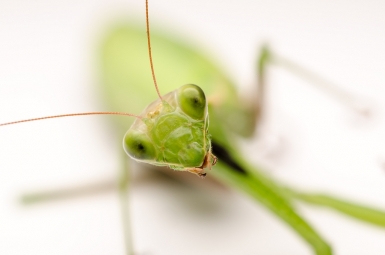
Browse Categories
- Dog Boot Camps
- Test
- Test
- Dogs Please Clicker Training
- Pet Insurance Comparison
- Exercising Pets With An E Scooter
- 10 Reasons Why Guinea Pigs Are Wholesome Little Pets
- Why You Should Use a Shed to House Your Pet
- How can Dog Owners Keep their Carpets Clean?
- How to Keep Your House in Order With Large Pets
- What is the Best Way to Feed a Puppy to Keep Them Healthy
- Pets Please
- All Animals and Pets
- Dogs and Puppies
- Cats and Kittens
- Birds
- Fish
- Reptiles
- All Other Small Pets
- Claws 'N' Paws Events
- PetsInLimbo/Greys4PetsInc.
News Search
PetsPlease News and Advice
The very Unique Praying Mantis
Having a pet Praying Mantis is a good school science project for your child.They are a little complicated but fairly easy to care for.
The Praying Mantis goes through shedding his skin 7 times. Each time they shed, they get stronger and more stable. For this reason, you should always get one that has shed his skin twice, putting him in his 3rd instar. Ones before this stage will more than likely be to weak and won`t survive.
They should be watched closely, even in the 3rd instar. A female can often shed one or two more times than the male. This is to allow the siblings in the same “clutch” to mature at different times. By doing this, it prevents inbreeding in nature.
You feed your Mantis fruit flies and other flying bugs. You only need to start a culture of fruit flies if you have dozens on Mantises to feed. You can order the flies and they should arrive cold. Just drop one in his habitat and in about 5 minutes, the fly will start to move and the feeding will start.
Because they feed on insects, they are cannibalistic, which means they will eat their own kind. After the 3rd. instar, they will need to be separated or they will prey on each other.
The size of your cage should be 3 times as high and 1 to 2 times as wide as your Mantis is long. If you have a breeding pair, you will need a 40 litre aquarium. The key is humidity. Cross-ventilation is a must to keep the humidity way up.
aquarium. The key is humidity. Cross-ventilation is a must to keep the humidity way up.
Normal room temperature is fine but some tropical species like it a little warmer. Put some plastic screen on one side of the cage so he will have somewhere to go molt. Also use leaves, sticks, and small branches for him to climb on.
Mantises require live food and they love flying insects. Don`t feed them ants, they bite. Avoid feeding a plump-looking Mantis, he is getting ready to molt. They are more vulnerable at this time than any other time.
DO NOT even touch his cage when he is molting. If he falls from his perch, he will die within 48 hours
